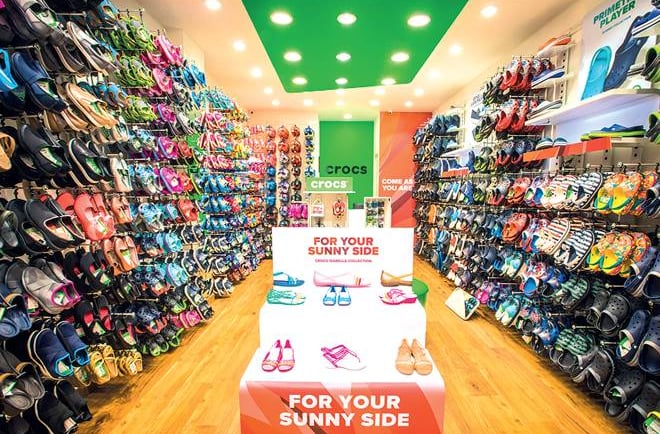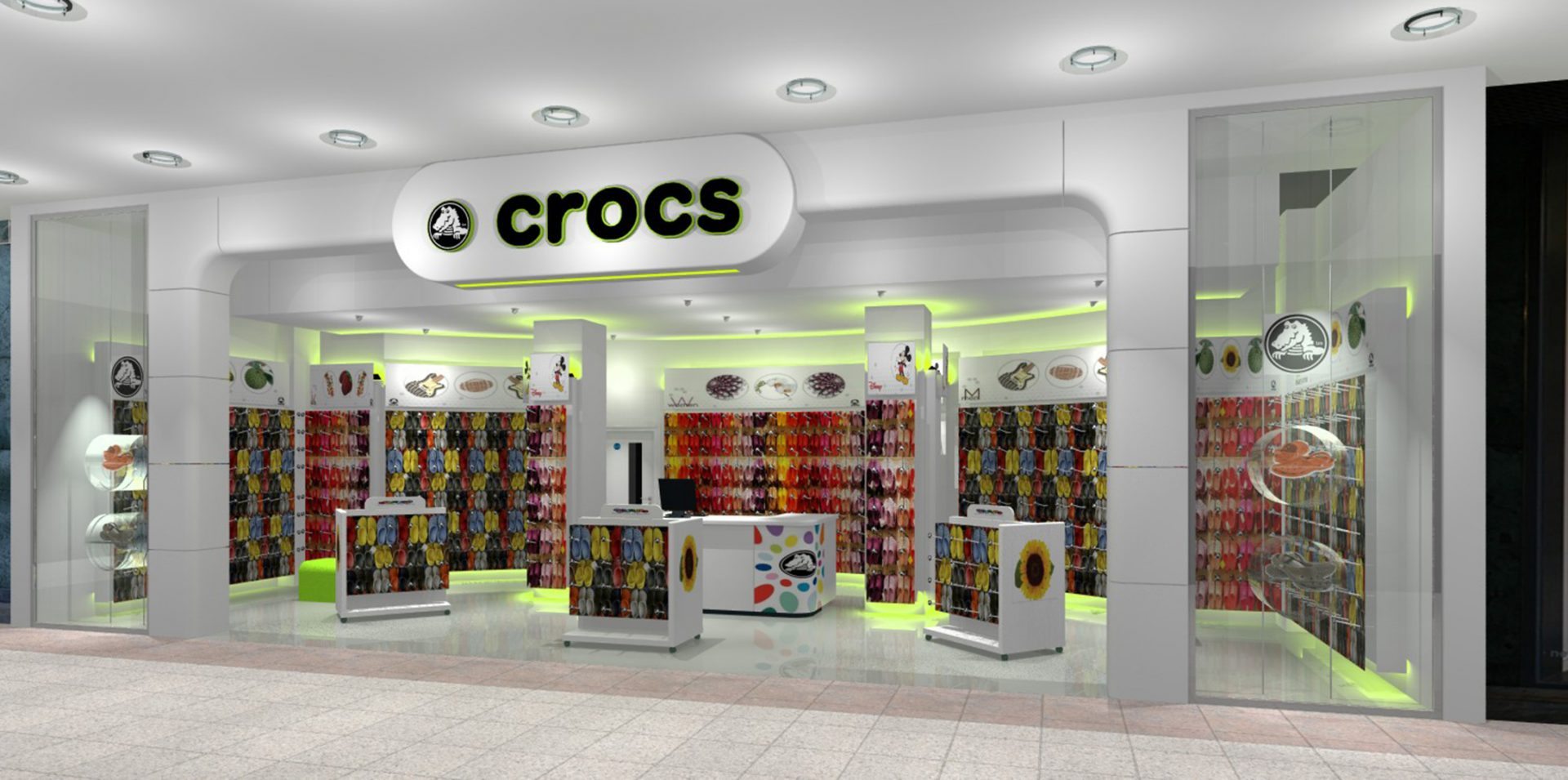👟 Welcome to Crocsy Vibe – Where Comfort Meets Global Style! 🌈
Crocs in 2025: Market Highs, Lows, and the Road Ahead
Post Description: Analyze Crocs in 2025 and discover how the brand balances innovation, pop culture influence, and global challenges. With strategic moves in design, sustainability, and digital presence, Crocs navigates highs and lows to shape the future of comfort-driven, trend-defining fashion.
SHARAD RAJGURU
7/22/20258 min read


Introduction to the Crocs Phenomenon
Founded in 2002, Crocs, Inc. emerged as a unique player in the footwear market with its innovative and unmistakable clogs made from Croslite, a proprietary foam resin. Originally designed as a boat shoe, Crocs quickly captured the attention of the masses due to its comfort, lightweight nature, and vibrant color options. The brand's distinctive look, reminiscent of traditional gardening clogs, sparked both admiration and skepticism, leading to an intriguing dichotomy in public perception. As the years progressed, the versatility of Crocs evolved, with the brand successfully venturing into various styles, including sandals and sneakers, while maintaining a focus on comfort and practicality.
The early years of the brand saw rapid growth, supported by a robust marketing strategy that capitalized on niche markets, particularly among healthcare workers and outdoor enthusiasts. In fact, Crocs initially found a devoted following among these professionals, who valued the shoes for their substantial comfort during long hours of standing. What began as a functional piece of footwear rapidly transformed into a fashion statement, aided by celebrity endorsements and collaborations with high-profile brands, including Balenciaga and Post Malone. This creative approach allowed Crocs to transcend its original identity, successfully positioning itself as not just a comfortable shoe, but also a symbol of casual fashion.
As we look ahead to 2025, Crocs stands as a noteworthy case study within the footwear industry. Its remarkable journey from humble beginnings to global recognition underscores significant trends in consumer behavior and market adaptability. While the brand has often faced challenges, including fluctuating consumer interest and changing fashion trends, it has consistently maneuvered through the highs and lows of the market. This analysis will explore these pivotal factors contributing to Crocs’ prominence and its strategic initiatives aimed at maintaining relevance in an ever-evolving landscape.
Market Highs: Sustained Sales Growth
In 2025, Crocs has demonstrated remarkable resilience and adaptability in its sales growth, continuing the positive trajectory it established in previous years. The brand's strategic focus on collaborations with renowned designers and celebrities has played a pivotal role in capturing new consumer segments and enhancing its market appeal. Notably, exclusive lines created in partnership with high-profile influencers have successfully infused fresh innovation into the classic Crocs aesthetic, thereby attracting both loyal customers and curious newcomers. This strategic undertaking is not only about fashion but also emphasizes the utility and comfort that Crocs is celebrated for.
Additonally, Crocs' aggressive and innovative marketing campaigns have significantly expanded its reach across various regions. The company has harnessed the power of social media platforms, utilizing visually striking and engaging content to resonate with a diverse audience. Seasonal promotions and region-specific advertisements have been strategically crafted to engage consumers' unique preferences and cultural connections, resulting in a broader market penetration. The effectiveness of these campaigns is reflected in the impressive sales figures, revealing a strong connection with customers who now view the brand as synonymous with both comfort and style.
The expansion into new markets, coupled with effective management of existing distribution channels, has also fueled Crocs' sustained sales growth. By leveraging e-commerce capabilities, the brand has successfully navigated supply chain disruptions and adapted to changing shopping behaviors, further solidifying its commitment to convenience and customer satisfaction. The combination of strategic collaborations, innovative marketing efforts, and sound operational practices positions Crocs favorably in the competitive footwear landscape, signifying a strong start to 2025 and indicating that the brand’s appeal is likely to persist in the coming years.
Market Lows: Challenges and Setbacks
As Crocs navigates the footwear industry in 2025, it faces several significant challenges that could impact its market performance. One of the foremost issues is the disruption of supply chains, a consequence of ongoing global logistical challenges. These disruptions have led to delays in production and distribution, causing not only stock shortages but also increased operational costs. As a result, Crocs may struggle to meet consumer demand during peak buying seasons, potentially leading to lost sales.
In addition to supply chain issues, changing consumer preferences present a further hurdle. The footwear market has seen a dynamic shift towards sustainability and ethical production practices. As consumers become more environmentally conscious, they increasingly favor brands that align with their values. Crocs, despite its efforts to incorporate sustainable materials, faces scrutiny regarding its overall environmental impact. This shift could alienate a segment of the customer base, ultimately affecting sales and brand loyalty in the long term.
Competition from other footwear brands also poses a considerable challenge for Crocs in 2025. The market is experiencing an influx of new entrants, particularly in the casual and comfort segments. Many competitors are innovating with technology, comfort, and design, which could attract consumers who previously favored Crocs. Established brands are also intensifying their marketing strategies, which may overshadow Crocs' traditional advertising approaches and reduce its market visibility.
These challenges, including supply chain disruptions, changing consumer preferences, and intensified competition, could hinder Crocs' growth trajectory. Addressing these setbacks effectively will require strategic planning and adaptability from the brand. As Crocs considers its path forward, a keen understanding of these market lows will be essential for navigating the complexities of the footwear industry.
Trend Agility: Crocs as a Fashion Statement
In recent years, Crocs has positioned itself as more than just a comfort-driven footwear brand. By embracing trend agility, the company has successfully transitioned into a bold fashion statement in 2025. This evolution is largely attributed to strategic design innovations and impactful collaborations with fashion influencers, which have played a crucial role in reshaping public perception of the iconic clogs.
One of the most noteworthy aspects of Crocs' transformation is its dedication to modern design. The brand has introduced an array of limited-edition collections that incorporate vibrant colors, textures, and accessories. By collaborating with high-end fashion designers and popular celebrities, Crocs has created unique variations that resonate with style-conscious consumers. Such partnerships not only elevate the brand's aesthetic appeal but also affirm its presence in contemporary fashion dialogues.
Moreover, the rise of social media has significantly contributed to Crocs' new image. Influencers on platforms like Instagram and TikTok have taken to showcasing their personalized Crocs styles, further fueling interest among younger demographics. These influencers often exemplify how the footwear can be integrated into various fashion contexts, from casual outfits to more eclectic ensembles, thereby attracting a broader audience who might have previously overlooked the brand.
In addition to collaborations, Crocs has focused on promoting self-expression through customization, allowing wearers to personalize their footwear with various charms and accessories. This feature has resonated with consumers who seek personal branding through their fashion choices and enhances Crocs' appeal as a versatile option. As such, 2025 marks a pivotal year where the brand redefines itself, blending comfort with contemporary style, appealing to fashion aficionados and casual wearers alike.
Global Brand Evolution: Expanding Reach in Diverse Markets
The evolution of Crocs as a global brand is a testament to continuous adaptation and strategic innovation in various regional markets. Over recent years, the company has notably expanded its footprint in regions such as Asia, Latin America, and Europe, employing targeted marketing campaigns tailored to unique cultural nuances. Understanding the consumer behavior in these diverse markets has been paramount in shaping Crocs' branding strategies.
In Asia, for example, the emphasis has been placed on vibrant collaborations with local influencers and celebrities. By integrating cultural elements familiar to local consumers, Crocs successfully appeals to a younger demographic seeking both style and comfort. Collaborative designs that resonate with regional aesthetics have attracted significant attention, resulting in a burgeoning market presence. Additionally, the strategic establishment of physical retail outlets in high-traffic urban areas has allowed consumers to experience the brand firsthand, fostering stronger customer relationships.
Simultaneously, in Latin America, Crocs has harnessed the power of localized partnerships to enhance brand visibility and market penetration. Collaborations with popular retail chains and local fashion designers not only promote brand loyalty but also emphasize Crocs' versatility. This approach highlights the adaptability of Crocs shoes, appealing to various consumers from families to fashion-forward individuals, ultimately solidifying its reputation in the region.
In Europe, Crocs has positioned itself as an eco-conscious brand, aligning with the growing demand for sustainability. Marketing campaigns that focus on the company’s commitment to environmental initiatives resonate with a consumer base that values ethical consumption. By highlighting sustainable materials and production processes, Crocs taps into a segment of the market that prioritizes corporate responsibility without sacrificing style.
Through these strategic efforts in diverse markets, Crocs not only enhances its brand presence but also expands its understanding of varying consumer preferences globally. The company’s ability to forge strong connections with different demographics is crucial for sustaining its competitive advantage in the global marketplace.
Sustainability: The Road Ahead for Crocs
As the global community becomes increasingly aware of environmental issues, companies across various sectors are reevaluating their practices to become more sustainable. Crocs, renowned for its comfortable and versatile footwear, is stepping up to the plate by integrating eco-friendly materials and sustainable production practices into its business model. This strategic shift not only aligns with contemporary consumer values but also positions Crocs favorably in an increasingly competitive market.
One of the primary innovations in Crocs’ sustainability efforts involves the use of eco-friendly materials. The company is actively sourcing alternatives that reduce the overall environmental impact of its products. This includes the incorporation of recycled content and biodegradable options in its footwear manufacturing. By prioritizing sustainable materials, Crocs aims to meet the growing consumer demand for responsible products while maintaining the quality and comfort for which it is known.
In addition to utilizing eco-friendly materials, Crocs is committed to enhancing its sustainable production practices. The company has been exploring methods to optimize energy use, minimize waste, and streamline supply chains. Implementing these practices not only decreases Crocs’ carbon footprint but also reinforces its dedication to being a responsible corporate entity. This commitment is vital, as customers now prefer brands that demonstrate social and environmental responsibility.
Furthermore, Crocs recognizes the importance of transparency in sustainability initiatives. The company is dedicated to communicating its progress to consumers, reinforcing the bond of trust essential in the digital age. With a focus on sustainability, Crocs aims to resonate with eco-conscious consumers while paving the way for a more sustainable future. As we move toward 2025, it is evident that Crocs is embracing the principles of responsible consumerism, setting an example for the industry and shaping a path forward that prioritizes the planet.
Future Outlook: Innovation and Consumer Engagement
As we look toward the future of Crocs beyond 2025, it is essential to consider the areas of innovation and consumer engagement that are likely to shape the brand's ongoing evolution in the dynamic footwear market. Crocs has always been known for its comfortable and versatile clogs, but the company’s positioning relies heavily on its ability to adapt to evolving trends and changing consumer preferences. To stay competitive, Crocs will need to focus on innovation in product design, materials, and sustainability practices.
One area ripe for development is the integration of advanced materials that enhance comfort, durability, and aesthetic appeal. Innovations such as incorporating breathable, high-performance fabrics or utilizing biodegradable materials might attract environmentally conscious consumers who are increasingly seeking sustainable options. Furthermore, tapping into regional and seasonal trends can lead to limited edition collaborations that create buzz and excitement around the brand, appealing to a broader demographic.
Additionally, Crocs must prioritize consumer engagement strategies that promote community and brand loyalty. The use of digital platforms for personalized experiences, including customization options for individual styles, can encourage users to connect more intimately with the brand. Social media campaigns that foster user-generated content, along with collaborations with influencers and celebrities, can elevate Cros’ visibility and relevance in a saturated market. Embracing the feedback loop between consumers and product development is crucial, allowing Crocs to remain agile and responsive in its approach.
Ultimately, ensuring a focus on innovation and meaningful consumer engagement will be key components for Crocs' roadmap beyond 2025. Adapting to market trends while staying true to their core strengths in comfort and style will likely prove vital for Crocs as they attempt to navigate the highs and lows of the ever-evolving footwear landscape.

Get in touch
Address
3721 Single Street
Quincy, MA 02169
Contacts
123-456-7890
info@email.com
